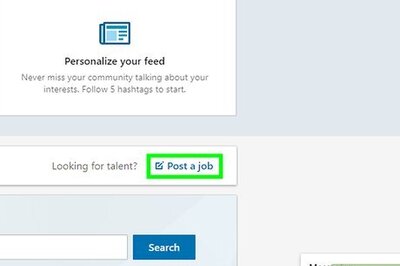
views
Social media network TikTok tried to bypass Apple’s App Tracking Transparency measures, in coordination with some other Chinese tech companies, but Apple called their bluff. In the belief that Apple wouldn’t be able to block their apps, particularly in the Chinese region, apps including TikTok and QQ attempted to make the switch to Chinese Advertising ID, or CAID, to circumvent App Tracking Transparency measures that give iPhone users control over which apps can track their usage across the internet, and which can’t. The belief stemmed from the confidence that Apple wouldn’t be able to ban apps incredibly popular in China. Apple did exactly that, by blocking updates for apps enlisting CAID, from the App Store. The Financial Times reports that Chinese tech companies including Baidu, Tencent and Bytedance have been working to create a new way of tracking iPhone users, for the purposes of advertising.
These measures to block app updates from popular Chinese tech companies such as Baidu, Tencent and Bytedance must be seen as a big win for Apple in the push for data privacy. This also nips in the bud, any potential criticisms, if Apple had allowed the alternate tracking mechanism to remain in place in China. That could have also led to a situation where tech companies in other countries would have implemented similar measures, leading to a watering down of the App Tracking Transparency feature and the push for privacy of user data. In May this year, data from analytics firm Flurry Analytics suggested that globally, now only 15% of iPhone users have allowed apps to track them on their iPhones—as against possibly the entire smartphone demographic, which had no control over how apps tracked them for collecting data to serve advertisements. The opt-in rate in the US is even lesser, now at 6% only. Apple had earlier warned Chinese apps to not dodge its privacy rules.
Apple introduced the App Tracking Transparency measures earlier this year for iPhone users, which protected users from apps tracking them across other apps and websites, without explicit permission. This gave users control to deny apps the permission to track their usage, something that would restrict data that these apps could collect and then serve targeted advertisements. Online ads are a big source of revenue for many tech platforms, including the likes of Facebook. And in light of the attempts made with CAID, for some Chinese tech companies too. The way the App Tracking Transparency feature will work is that when you open an app on your iPhone, for the first time or after an update, you will be asked, “Allow XYZ to track your activity across other companies’ apps and websites?” The two options you will have at this stage would be “Ask App not to Track” or “Allow”.
The reason for CAID’s development was to enable another route for apps to still track users across other apps and websites, even if they selected “Ask App not to Track” on the default privacy layer in iOS. So, how does CAID work? I’ll allow the experts to take over here. “Shared platform identifiers, such as the IDFA on iOS and the Google Advertising ID on Android, are perfectly suited to measuring digital ads. This is because the same ID is available for all events, so it’s simple to connect ad touches with conversions,” says Alex Bauer, head of product marketing at Branch, in a column for Adexchanger, published earlier this year. “But after Apple’s ATT policy goes into effect, IDFAs will be unavailable in the vast majority of cases, which means these traditional measurement flows will break. CAID is essentially an open standard intended to function as a drop-in IDFA replacement,” he added. The CAID tool had been developed by the Chinese state-backed Chinese Advertising Association. Apple continues to maintain that any apps that violate its policies will be rejected from the App Store.
There is trouble brewing for the global online advertising space. Google has also set the wheels in motion for measures similar to Apple’s App Tracking Transparency, for Android phone users. Eventually, when Google’s own iteration of the app tracking prevention comes into force, advertisers and apps that request access to advertising IDs on Android phones if a user has chosen to opt out of tracking, will instead get a string of zeros. Google is now letting developer know about the intended changes. Till now, users have been able to also opt out of personalized advertising on Android (Settings > Google > Ads > Opt out of Ads Personalization) which restricted apps from fetching your advertising ID to serve personalized ads. However, these IDs are also used by apps and developers for data such as usage analytics and fraud prevention, particularly for payment apps, which link device IDs with payment methods
Read all the Latest News, Breaking News and Coronavirus News here.


















Comments
0 comment